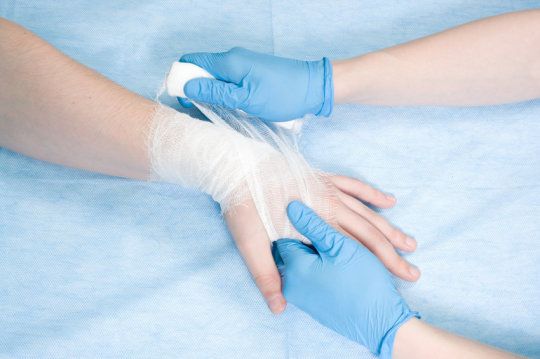Page 9079
Jan 30, 2019
New materials could ‘drive wound healing’
Posted by Paul Battista in categories: biotech/medical, materials
Researchers have developed new bioinspired material that interacts with surrounding tissues to promote healing.
Jan 30, 2019
Brain Cancer Patient Is First to Get Untested Treatment Under Trump-Backed Law
Posted by Paul Battista in categories: biotech/medical, law, neuroscience
‘Right to Try’ law allows patients and drugmakers to circumvent the FDA’s rules on access to experimental drugs.
Jan 30, 2019
Osteoporosis breakthrough: Bone mass increased
Posted by Paul Battista in categories: innovation, neuroscience
A groundbreaking set of studies has found that blocking certain receptors in the brain leads to the growth of remarkably strong bones. Could a new osteoporosis treatment be on the horizon?
Jan 30, 2019
A neural network can learn to organize the world it sees into concepts—just like we do
Posted by Paul Battista in categories: information science, robotics/AI
Generative adversarial networks are not just good for causing mischief. They can also show us how AI algorithms “think.”
Jan 30, 2019
Gene-editing tool CRISPR repurposed to develop better antibiotics
Posted by Paul Battista in categories: biotech/medical, genetics
A University of Wisconsin-Madison researcher and his collaborators at the University of California, San Francisco have repurposed the gene-editing tool CRISPR to study which genes are targeted by particular antibiotics, providing clues on how to improve existing antibiotics or develop new ones.
Jan 30, 2019
The brain may be able to repair itself — with help
Posted by Paul Battista in categories: biotech/medical, neuroscience
Through treating everything from strokes to car accident traumas, neurosurgeon Jocelyne Bloch knows the brain’s inability to repair itself all too well. But now, she suggests, she and her colleagues may have found the key to neural repair: Doublecortin-positive cells. Similar to stem cells, they are extremely adaptable and, when extracted from a brain, cultured and then re-injected in a lesioned area of the same brain, they can help repair and rebuild it. “With a little help,” Bloch says, “the brain may be able to help itself.”
Jan 30, 2019
Paraplegic patients walk again with spinal cord implants
Posted by Paul Battista in category: biotech/medical
Jan 30, 2019
Implantable Knee Shock Absorber Embedded in First Patient in U.S.
Posted by Paul Battista in category: biotech/medical
 A total knee replacement is usually the result of the cartilage within the joint wearing out due to arthritis. Such surgeries are difficult to perform, require a good deal of rehabilitation, and too often result in sub-optimal outcomes. An implantable shock absorber has now been implanted for the first time in the United States to test whether it can delay the need for total knee replacements, and maybe even avoid such procedures completely in many patients.
A total knee replacement is usually the result of the cartilage within the joint wearing out due to arthritis. Such surgeries are difficult to perform, require a good deal of rehabilitation, and too often result in sub-optimal outcomes. An implantable shock absorber has now been implanted for the first time in the United States to test whether it can delay the need for total knee replacements, and maybe even avoid such procedures completely in many patients.
The Calypso Knee System was developed by Moximed, a company based in Fremont, California, and surgeons at The Ohio State University Wexner Medical Center are the first to try it out in the U.S. The device attaches to the sides of the femur and tibia bones, away from the joint itself and therefore doesn’t alter the anatomy of the fragile joint.

Continue reading “Implantable Knee Shock Absorber Embedded in First Patient in U.S.” »
Jan 30, 2019
The Bioart of Neurons and Memory
Posted by Paul Battista in categories: biotech/medical, cryonics, life extension, neuroscience
Demonstrating the preservation of cells after a living organism is pronounced dead and revived is not a traditional bioart topic. But it is an important one. It is a crucial step for advances in the use of lowered temperatures for sustaining the efficacy of organs and organisms during medical procedures, and especially of preserving neurons for the science cryonics.
My recent bioart research is a breakthrough that will help to build momentum toward more advanced studies on information storage within the brain, as well as short-term behaviors of episodic, semantic, procedural, and working memory.
In this article, I will review how I became involved in this research, the guidance along the way, my initial training at 21st Century Medicine, pitching the research project to Alcor, and submitting my proposal to its Research Center (ARC). I will then take you into the lab, the process of trial and error in our first studies, developing a protocol based on olfactory imprinting and applying several cryopreservation methods, developing the migration index, and the rewards of working with a lab technician who became an admiral colleague.


















